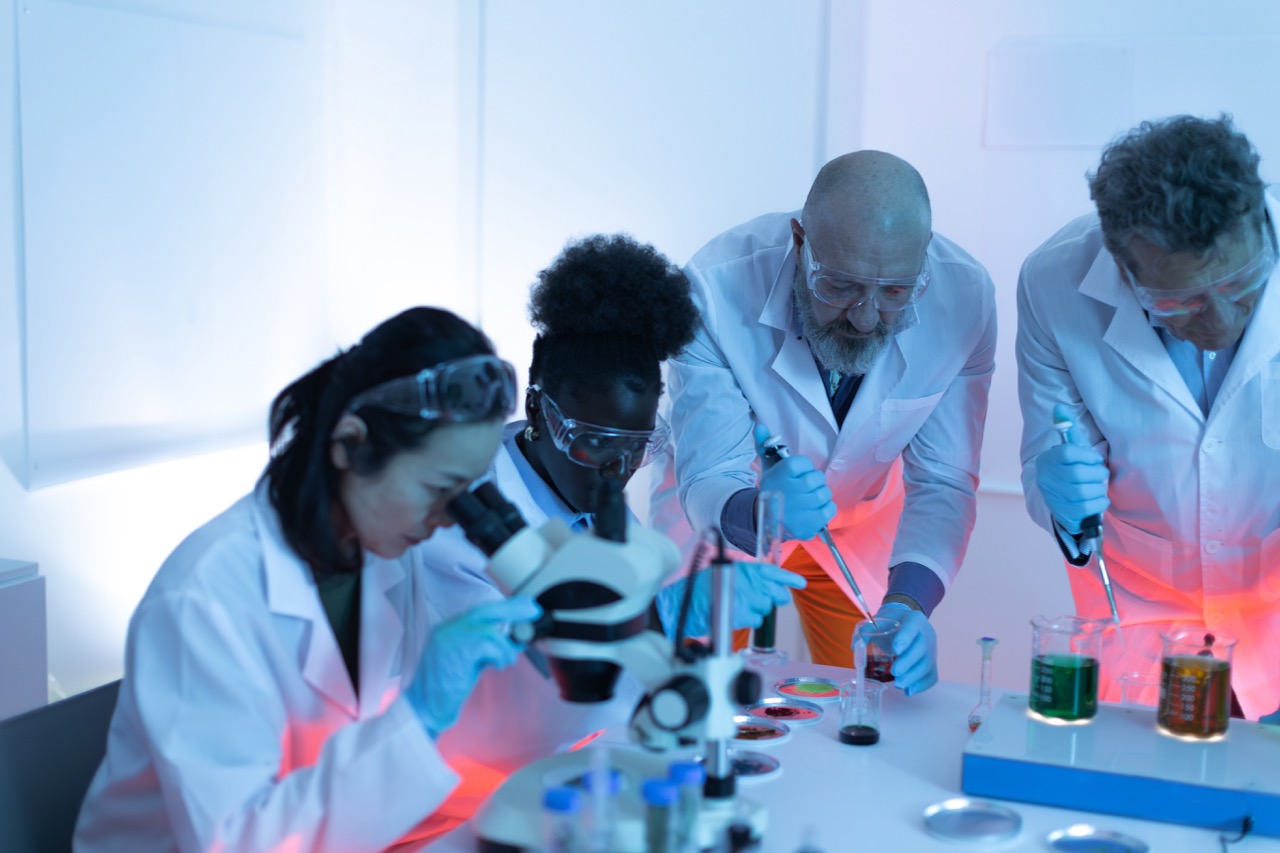Hermann Joseph Muller, an American geneticist and Nobel laureate, made significant contributions to our understanding of genetics and mutations, particularly through his groundbreaking research on the effects of X-rays. His work in the early 20th century not only expanded the field of genetics but also laid the groundwork for future studies on the mutagenic properties of various forms of radiation. In a time when the mechanisms of genetic inheritance were still being unraveled, Muller’s innovative laboratory experiments offered critical insights into how external factors could alter genetic material, influencing an entire generation of research in genetics and molecular biology.
Understanding Hermann Joseph Muller’s Pioneering Research
Hermann Joseph Muller was born in 1890 and became one of the foremost figures in genetic research. His academic journey began at the University of Texas and led him to work alongside some of the most notable scientists of his time, including Thomas Hunt Morgan. Muller’s early work focused on the study of fruit flies (Drosophila melanogaster), a model organism that would play a crucial role in his later experiments. His comprehensive understanding of genetics, combined with his keen experimental approach, positioned him to explore how environmental factors could induce genetic changes.
In the 1920s, Muller began to investigate the effects of radiation on genetic material, concentrating specifically on X-rays. At a time when the implications of radiation exposure were poorly understood, Muller’s curiosity and scientific rigor drove him to hypothesize that X-rays could cause mutations in the genetic code. He understood that mutations could significantly affect the phenotype and viability of organisms, ultimately influencing the process of evolution itself. His work was pioneering, as it sought to connect physical agents, like X-rays, with genetic alterations, thus bridging two previously separate domains of biological inquiry.
Muller’s research was notable not only for its innovative approach but also for its ethical dimensions. Recognizing the potential dangers of radiation exposure, he advocated for responsible use and conduct within the scientific community. His commitment to understanding the risks associated with X-ray exposure underscored the importance of ethical considerations in scientific research, particularly when dealing with powerful tools that could have profound effects on living organisms and their genetic makeup.
The Role of X-rays in Inducing Genetic Mutations
X-rays are a form of ionizing radiation that carry enough energy to remove tightly bound electrons from atoms, which can lead to the formation of free radicals. These free radicals can cause significant damage to DNA, ultimately leading to mutations. Muller’s interest in the mutagenic potential of X-rays was piqued by the growing body of evidence suggesting that environmental factors play a critical role in genetic variation and evolution. By investigating this relationship, Muller aimed to elucidate the mechanisms behind mutation and its implications for heredity.
In his experiments, Muller exposed fruit flies to controlled doses of X-rays and then observed the resulting offspring for phenotypic changes. His meticulous approach allowed him to quantify the mutation rates and establish a direct correlation between X-ray exposure and genetic alterations. This groundbreaking work demonstrated that exposure to X-rays significantly increased the frequency of mutations, laying the foundation for our understanding of mutagens in general. Muller’s findings emphasized that increasing levels of radiation could, in fact, lead to a corresponding increase in mutation rates, revealing a clear and alarming relationship between external factors and genetic integrity.
Furthermore, Muller’s research into X-rays as a mutagen revealed critical insights into the nature of genetic mutations. He categorized the types of mutations induced by X-rays, including point mutations, chromosomal aberrations, and lethal mutations. By doing so, he provided a framework for understanding how mutations could arise and their varying consequences for organisms. This knowledge not only advanced the field of genetics but also raised awareness about potential risks associated with exposure to X-rays and similar forms of radiation, prompting further research into safety and health regulations.
Key Experiments Conducted in Muller’s Laboratory
One of the most significant experiments conducted by Muller involved exposing male Drosophila to X-rays and analyzing the resulting mutations in their offspring. By systematically varying the dosage of X-rays, Muller was able to determine the dose-response relationship for mutation rates. This experiment was groundbreaking in that it provided empirical evidence that not only supported his hypothesis but also established a quantifiable method for assessing the effects of radiation on genetic material. The results showed a clear increase in mutation frequency with higher radiation doses, solidifying the role of X-rays as a potent mutagen.
In another key experiment, Muller identified specific types of mutations induced by X-ray exposure. He meticulously examined the phenotypic outcomes in the progeny, noting changes in wing size, color, and other observable traits. This detailed observation allowed him to further classify mutations into categories such as lethal mutations, which resulted in non-viable offspring, and dominant mutations, which visibly expressed phenotypic changes in the next generation. Muller’s ability to classify and study these mutations provided critical insights into the mechanisms of heredity and the potential consequences of genetic alterations.
Muller also contributed to the understanding of the genetic mechanism behind the mutations he observed. He postulated that mutations could lead to significant changes in genetic functions, potentially influencing both evolutionary processes and species adaptation. His laboratory work not only confirmed the mutagenic properties of X-rays but also raised questions about the long-term implications of such mutations in natural populations. This foresight exemplified Muller’s role as a visionary in genetics, paving the way for future research aimed at unraveling the complexities of genetic variation and its impact on evolution.
Implications of Muller’s Findings on Genetic Studies
Muller’s groundbreaking studies on the mutagenic effects of X-rays had far-reaching implications for the field of genetics. His work established a foundation for understanding how environmental factors could influence genetic variation, leading to a paradigm shift in the way scientists approached genetics and evolution. By demonstrating that mutations could arise from external sources, Muller challenged the prevailing notion that mutations were purely random events, instead highlighting the role of external agents in shaping genetic diversity.
The implications of Muller’s research extended beyond basic genetics; they also touched upon human health and environmental science. His findings underscored the potential risks associated with exposure to radiation, prompting further investigation into the safety of medical practices involving X-rays, as well as occupational safety in various industries. The awareness raised by Muller’s work continues to resonate today, influencing regulations and safety protocols regarding radiation exposure in health care and research settings.
Furthermore, Muller’s pioneering research inspired a generation of scientists to explore the relationships between environmental factors and genetic mutations. His methodologies and findings laid the groundwork for future studies on other mutagens, including chemicals and biological agents, thereby expanding the scope of genetic research. Today, the principles established by Muller continue to inform fields such as molecular genetics, evolutionary biology, and genomics, demonstrating the lasting impact of his innovative laboratory work on our understanding of genetics and its complexities.
Hermann Joseph Muller’s laboratory work on the mutagenic effects of X-rays represents a pivotal moment in the history of genetics. His pioneering experiments not only provided critical evidence of how environmental factors can induce genetic mutations but also reshaped our understanding of heredity and evolution. The implications of his research continue to reverberate across various scientific fields, emphasizing the importance of studying the interaction between genetic material and external agents. Muller’s legacy as a visionary scientist and advocate for responsible research practices remains a cornerstone of modern genetics, highlighting the profound impact that dedicated inquiry can have on our understanding of life itself.










